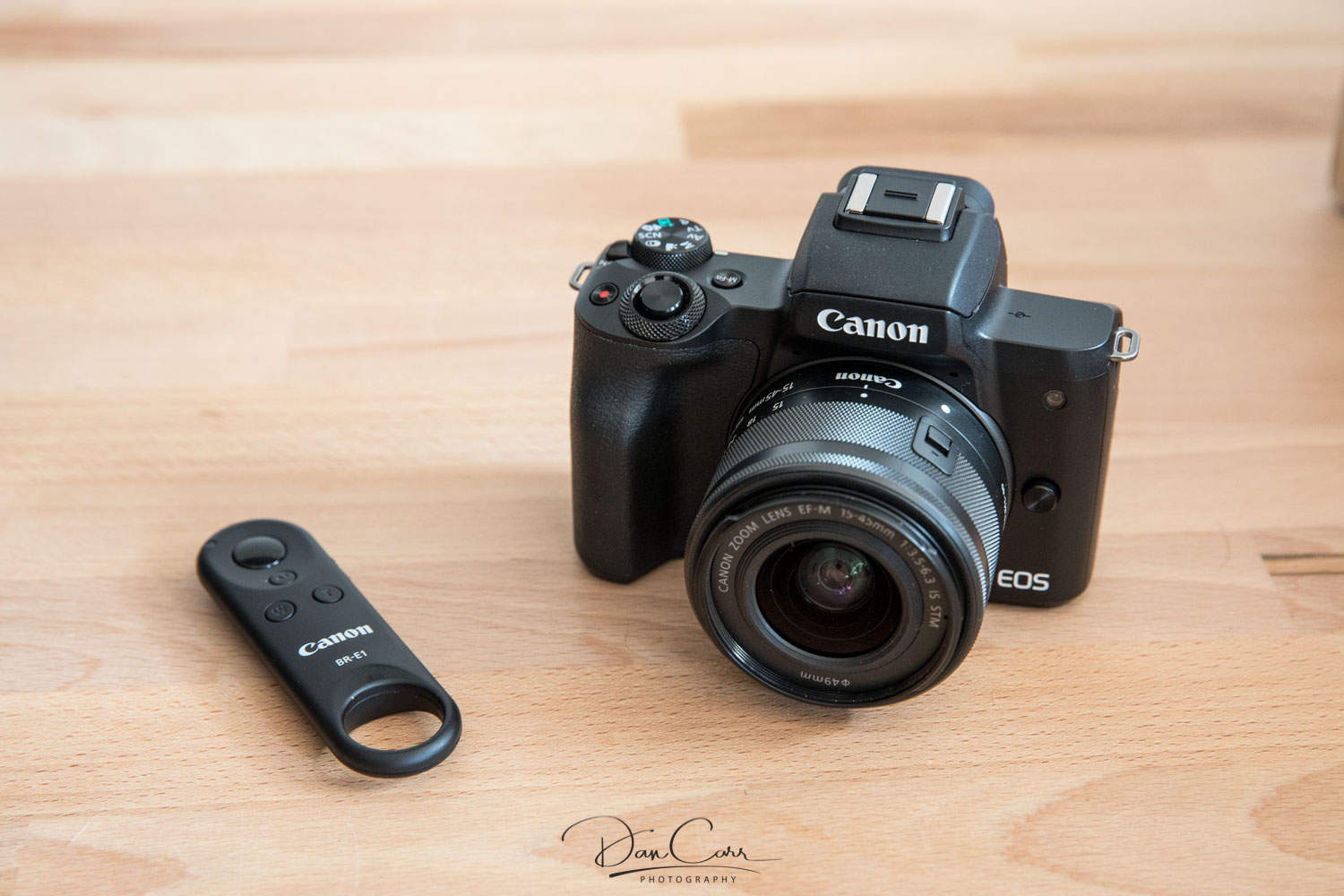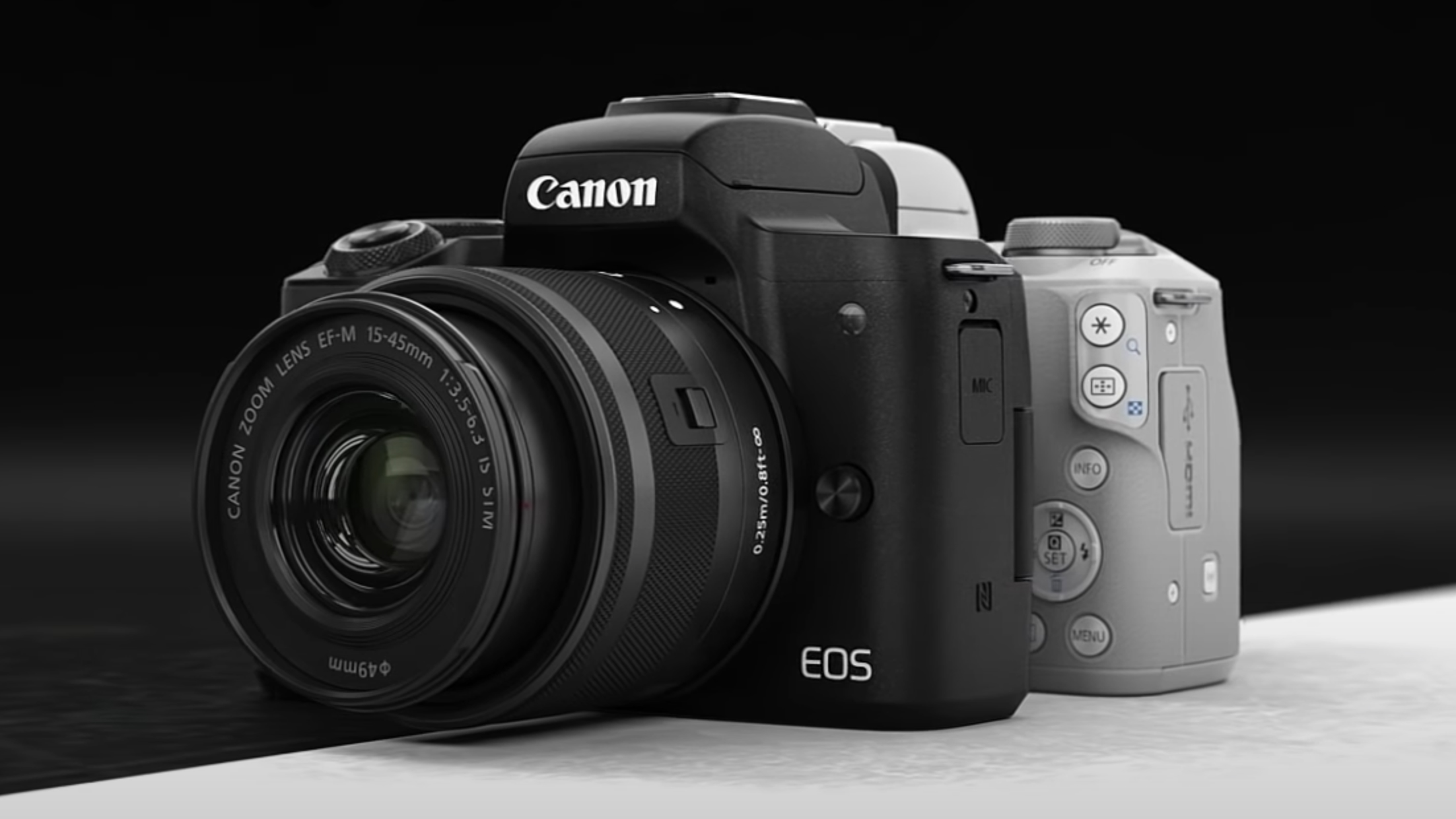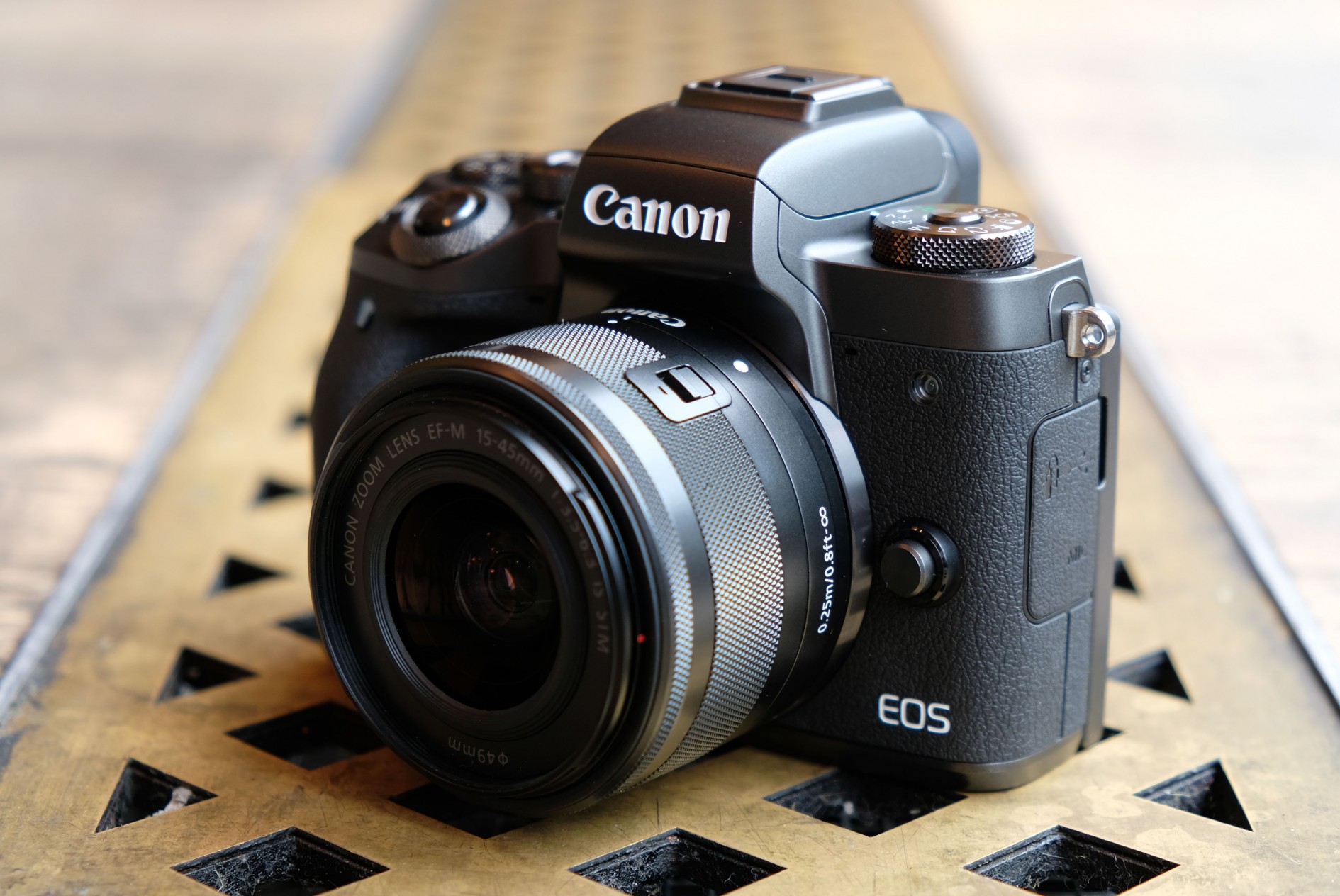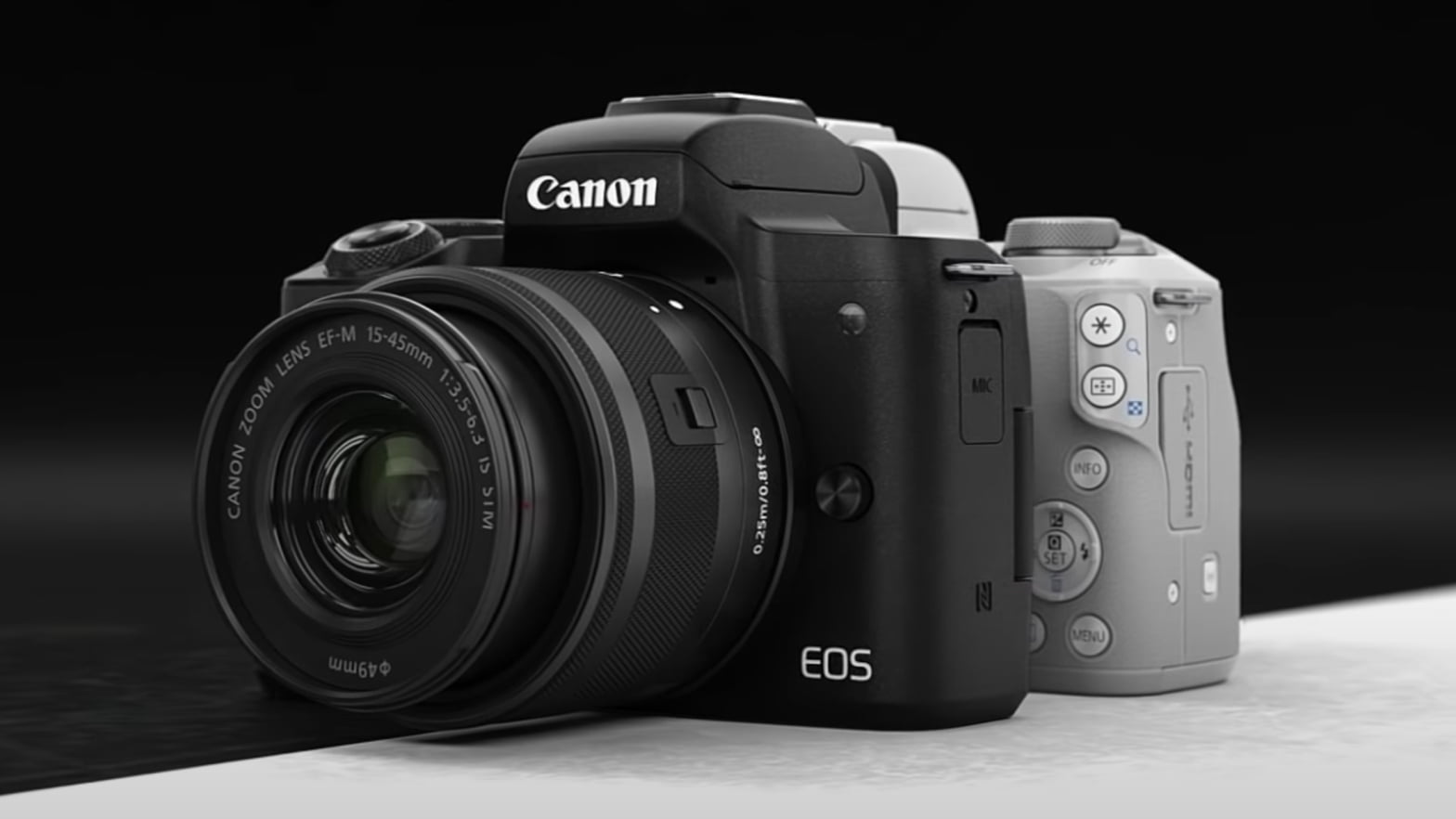The Canon EOS M50 Mark II – It has 24.1MP image sensor, Digic 8 processor, 2.36 million-dot EVF and 3-inch touchscreen. The Canon EOS M50 Mark II is identical to the original Canon EOS M50. The same hardware, same ergonomics, same sensor, same almost-everything.
Sensor: 24.1MP CMOS APS-C
| Sensor: | 24.1MP CMOS APS-C |
| Image processor: | Digic 8v |
| Lens mount: | Canon EF-M |
| Autofocus: | Dual Pixel CMOS AF (contrast detect only in 4K) with 3,975 focus positions |
| ISO range: | ISO100-25600 (exp. to 51200) |
| Video: | 1080p up to 60p, 4K (with 1.6x crop) up to 25p |
| Viewfinder: | 0.39-type OLED EVF, 2.36 million dots |
| Memory card: | 1x SD UHS-I |
| LCD: | 3-inch fully articulating LCD touchscreen, 1.04 million dots |
| Max burst: | |
| Connectivity: | Wi-Fi (2.4Ghz), Bluetooth (4.1), micro USB, micro HDMI, microphone |
| Size: | 116.3 x 88.1 x 58.7mm |
| Weight: | 387g (black) / 388g (white) including battery and memory card |
You’re getting an identical camera to the original M50. That means you get the same capable 24.1MP APS-C image sensor, with a sensitivity of ISO100-25600 and a maximum burst shooting speed of 10fps.

This renders sharp and appealing still images, with the Dual Pixel CMOS AF you can expect robust autofocus performance to get your shots sharp. However, the market that the EOS M50 Mark II is really making a play for is video and content creation.https://www.youtube.com/embed/KRAep90ICYM?version=3&rel=1&showsearch=0&showinfo=1&iv_load_policy=1&fs=1&hl=en&autohide=2&wmode=transparent
It captures 4K video at 24 or 25p, and 1080p (FullHD) video at 60, 50, 30, 25, and 24p. However, there are a caveats; while 1080p features the same Dual Pixel AF (based on superior phase detect autofocus technology), 4K video is instead limited to a more primitive contrast detect system. In addition, shooting in 4K invokes a minimum of a 1.6x crop factor.
So far, so familiar. What is different here over the original is entirely software based – and this is where the potential big differences lie.

For starters, the M50 Mark II now features a clean HDMI out – making this a much better option for streaming and webcamming, provided you have a capture card such as the Elgato Game Capture HD60 S or a dongle like the Elgato Cam Link. You can, of course, still connect the camera to your computer via a USB connection with Canon’s Webcam Utility software.
It can also record social media-friendly vertical video, and can even live stream directly to YouTube – both of which are significant features to the burgeoning content creation market.

It has an Eye detect AF – which detects and tracks human eyes when shooting both stills and video footage.
Again, the M50 Mark II shares the same tiny footprint as its predecessor – this is a truly compact, yet capable, mirrorless camera. It’s much smaller and more nimble than full-frame mirrorless cameras like the Canon EOS R5 (which is already much smaller than a DSLR).

What’s surprising, though, is that it’s actually even smaller than Micro Four Thirds (MFT) cameras like the Olympus OM-D E-M5 Mark III. Given that MFT sensors are even smaller than APS-C ones, its’ unusual for an APS-C body to have a smaller form factor – however, the M50 Mark II’s compact form gives it the same size advantage as a Micro Four Thirds camera, with all the benefits of a larger and higher-resolution APS-C sensor.

Unsurprisingly the M50 Mark II packs the same 2.36 million-dot OLED electronic viewfinder and 3-inch, 1.04 million-dot fully articulating LCD touchscreen as its predecessor. Its 4K capabilities carry a number of caveats, and we can’t recommend this camera if you intend to shoot 4K video. However, if you want to shoot 1080p and you’re looking for a powerful, easy to use body with great autofocus that’s as at home for run-and-gun videography as it is vlogging or creating for TikTok, the M50 Mark II is in its element.
Canon certainly offers more powerful APS-C cameras, such as the Canon EOS M6 Mark II, which deliver superior results in both stills and video. However, the M50 Mark II’s party trick is its perfectly pitched performance-to-price ratio. This is an affordable, powerful, compact and easy to use camera that’s ideal for travel and everyday photography, as well as all manner of content creation.



